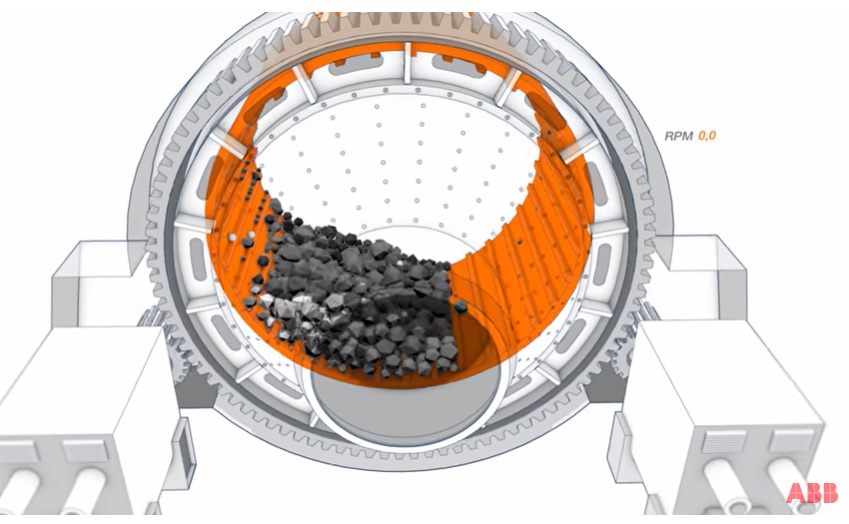Gearbox Innovation Evolves in Step with Expanding Servo Market
Gearbox Innovation Evolves in Step with Expanding Servo Market
Approximately one quarter of all servo motors around the world require some type of gear reduction in their applications. From large satellite dishes to precision medical devices, gearboxes boost torque and reduce speed for servos in order for them to be sized more efficiently. While gearbox fundamentals haven't changed much over the past 20 years, their effectiveness has improved significantly, driven mostly by the need to accommodate advancements in servo technology.
Servo motor market expansion
Global manufacturers are using more and more automation to meet their ongoing requirements for faster, better and more cost-efficient production. To meet this demand for continuous improvement, servo manufacturers have been developing motors that are smarter and have a higher torque density for a particular motor size.
The more common NEMA 34 size motor, for example, now puts out two or three times as much torque as it did 20 years ago. And because of the developments in servo technology and performance, the gearhead market has had to make improvements as well in order to offer similar benefits to the end user. Three of the most significant enhancements can be found in the gearing profile, material strength and mounting process.


High-performance gearing profile
Perhaps the most significant advancement in gearbox design is the transition from a parallel shaft profile to a true planetary design. Where traditional gearboxes meshed two gears together on parallel shafts, most high-performance gearboxes today use a planetary arrangement in which the gears mesh at three points of contact. This arrangement provides load sharing between the gears, which increases torque performance and overall life.
Further improvements on the planetary design can be achieved by cutting the gears on a helix angle. These helical planetary gears increase the number of teeth in mesh at any given time, which produces a stronger, more accurate and quieter-running gearhead.
Heat treat processes
The heat treat processes used on the internal gearing directly impact the overall performance on any gearhead. Some manufacturers use lower-cost, chemical heat treat processes that do not hold up under the extreme torque or high duty cycle applications. For higher performance and longer life, many manufacturers use a case-hardening heat treat process that increases the hardness layer by more than 30 times compared to alternatives. Even the best and most robust designs will not hold up for an extended period of time if the proper heat treat methods are not used.

Quick, Error-Free Installation
In the past, mounting of traditional gearheads was a painstaking process. There were several steps that introduced possibilities for human error such as the mounting of the gearhead pinion gear, or sun gear, on the motor shaft. This usually required precise, time-consuming measurements that increased the chance of failure if not done properly. Today, however, most gearhead manufacturers have modified their designs to make mounting procedures faster, easier and free of potential errors. Mounting can now be done in a few easy steps in under five minutes.
Balancing application tradeoffs
While servo motors and gearboxes can be found together in almost every market, gearbox usage varies based on design engineers' needs. Gearboxes are designed for specific applications (or at least for specific application requirements) and provide flexibility when sizing a servo motor to achieve desired operating loads and speeds. However, choosing a gearbox requires some tradeoffs among cost, precision, performance, durability and environmental protection.

Users implementing gearboxes in operations such as snack bar packaging, for example, are more concerned with speed than precision. They are less concerned about backlash or torque than about maximizing throughput on the packaging line at the lowest cost and longest life, considering the durability of both the gearbox and the servo motor. Customers in wet process food applications, such as cutting bacon slices or producing frozen French fries, also might opt for speed over precision but would value sanitary, stainless steel material that is sealed to meet ingress protection (IP) standards, including protection against high-pressure equipment wash-downs.
Users of gearboxes on robots, on the other hand, would be more concerned about envelope size. They might, for example, be implemented on an arm that is already designed to minimize overhang stress and may not tolerate the further extension an added gearbox might introduce. Precision is also critical here, making the challenge to provide the maximum precision and stiffness in the smallest envelope. Robotics users are more likely to trade off cost for performance and footprint.
Following are examples of key variables to cover when specifying a gearbox:
Many gearbox manufacturers offer tools that help calculate the optimal combination of features. For example, Thomson Industries developed the Micron Motioneering tool, which is an online product sizing and selection platform that facilitates a fast and easy system sizing. The tool assists with the accurate motor sizing and mounting and offers an advanced online ordering technology.
Gearing up for tomorrow
The digital transformation of global industry is well under way. As industrial devices become smarter and more connected, end users will be developing ways to use these new capabilities to add value to their market offerings. Servo motor systems, including their options for high-precision motion control, have been increasing their intelligence to meet these emerging market needs. And as they do, gearbox innovation will continue to match their every step. 
For more information:
Thomson Industries, Inc.
Phone: (540) 633-3549





